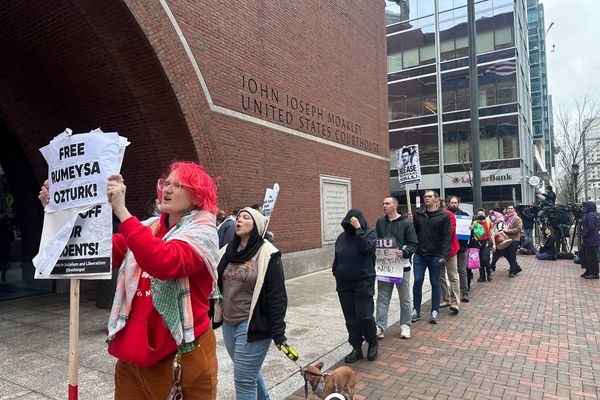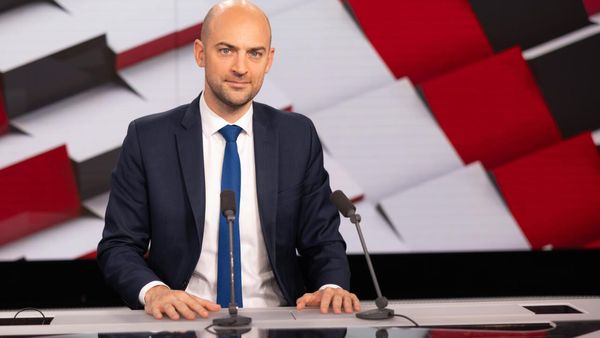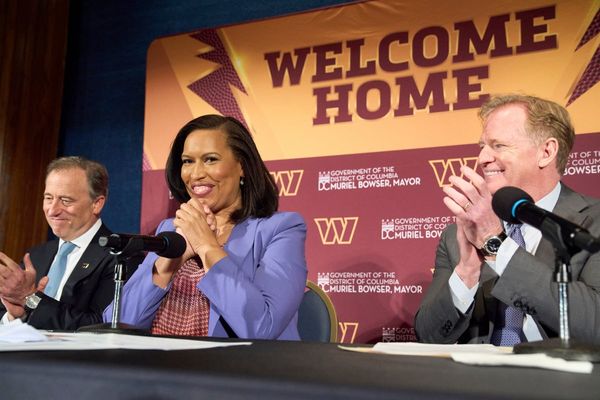
When the prime minister flew into the tiny regional airport of Moruya on Easter Monday, it was holidaymakers at the nearby coastal campground, not locals, who greeted him.
“I want to give a shout-out to the people from the caravan park … who donned their jammies, came out to say G’day,” he told reporters later that day at a Batemans Bay urgent care clinic. “They’re having a wonderful holiday here in a beautiful part of the world.”
The south coast is one of the most popular tourist spots in New South Wales, welcoming about 11 million visitors a year, with a high number of retirees and holiday properties. Some 29% of residents are aged over 65, according to census data, compared with 17% of the general population.
This year, it’s also home to one of the tightest electoral races in the country. A long stretch of Princes Highway lined with dozens of campaign placards in red, blue and yellow greeted visitors to the seat of Gilmore over the Easter holidays.
The electorate, which covers 6,322sq km on the south coast – from Kiama in the north to Tuross Heads in the south – has been held by Labor’s Fiona Phillips since 2019, after the retirement of the Liberal MP Ann Sudmalis.
In 2022, Phillips staved off the long-serving state MP for Bega, Andrew Constance, by just 373 votes. It took weeks to declare her the winner by a margin of just 0.17%, handing Labor its crucial 77th seat in the parliament.
Black summer effects linger
Three years later, Constance is giving the seat another crack, having vied for a place in federal politics since 2020. This time, the race has been further complicated by the entrance of a Climate 200-backed independent, Kate Dezarnaulds, one of just four climate-focused independents challenging a sitting Labor MP.
Before her campaign’s official launch, she cited polling suggesting she had about 13% of the primary vote. Since then, she says, she has amassed about 350 volunteers and reached 80,000 people on social media.
“We are a genuine force in this election,” Dezarnaulds says. “Regional people are used to the frustration of poor representation in Canberra and that’s not going to go away if major parties stick to their same tired playbook.”
To Dezarnaulds, climate change isn’t just “ideological” in Gilmore.
“We’ve seen the impacts of increasing natural disasters up close and personal,” she says. “The people of Gilmore understand we need to get serious about disaster preparedness and back a just energy transition, but we’ve barely heard anything about the environment [this election] from either major party.”
The effects – both mental and physical – of the devastating black summer bushfires, which displaced thousands of people on the south coast and destroyed 1,000 homes in the Bega Valley and Eurobodalla local government areas alone, still ripple through the electorate. The foliage on the gum trees has grown back, but beneath it is blackened charring.
At the time of the fires, Constance gained a national platform when he almost lost his house and became renowned for his no-nonsense oration style – criticising Scott Morrison’s response to the natural disaster and calling for federal climate action.
But in recent months he has become a key opponent of a floating offshore wind zone along the Illawarra and south coast, leading to allegations of putting his political ambitions ahead of “sound policy”. In February he told Sky News the Liberal party would take the Paris Agreement 2035 climate target “off the table” if elected.
He says the hardship the region has endured since 2019, from the pandemic to bushfires, drought and the cost-of-living crisis, motivated him to run a second time.
“For me, this about the community, for the community,” he says.
“I’m determined to be a strong voice for Gilmore in Canberra, not Labor’s voice on the ground in Gilmore. And that’s, unfortunately, what we’ve seen.”
Constance says he retains a “strong view” about the need to reach net zero by 2050, but disputes policies which don’t “benefit all of the community”.
“What I made clear [on Sky] was that the 2035 target should be off the table this side of the election,” he says.
“You can be against a renewable energy project [and] still be pro-renewable energy.
“A lot of people can’t afford the upfront installation of Tesla batteries and solar panels. It’s really hard, and for me, making sure that the energy transition is done in a way that’s sensitive to all is really important.”
In February, Labor paused its decision on the offshore windfarm – which it had amended to sit further from the coast and be reduced in size – until after the federal election at the request of the developer, citing “the sovereign risk created by Peter Dutton’s reckless and unprincipled opposition to investment and jobs in the renewables sector”.
Constance maintains his opposition to the project, calling it a “white elephant” that is too high cost and “just not feasible”, and appearing at a public forum this month run by community lobbyist group, Responsible Future.
Phillips says Constance has drummed up “unnecessary fear” over the project, which would only take in the tip of the electorate in Kiama.
“I don’t think people in Kiama will fall for that,” she says. “I’ve probably had 40 people contact me directly [about it].”
The Labor MP, who grew up on a local dairy farm and worked at HMAS Albatross and as a Tafe teacher before turning to politics, describes coming to office in 2019 as a “baptism of fire”.
“It wasn’t what I was expecting,” she says.
“There were the bushfires. But it wasn’t just the bushfires. It was the floods. It was natural disaster after natural disaster … and to be honest, that hasn’t really stopped, we’re the most natural disaster prone area in NSW.
“It’s a very difficult environment for people to live in. Supporting people through recovery and then putting resilience measures in place has been a big focus.”
It’s those efforts that she hopes will gain her a third term in office.
“I’m not as high profile as Warren Mundine [who ran in 2019] and Andrew Constance, but I work very, very hard,” she says.
“For the last three years, that’s what I’ve been doing … but it’s still going to be tough.”
Tired of party politics
To the south and west of Gilmore is Eden-Monaro. The seat is considered safely Labor’s, held by Kristy McBain – who is also the minister for regional development and local government – on a notional 6.2% margin, slightly lower than in 2022 after a redistribution.
McBain’s main contender is the Liberal’s Jo van der Plaat, a lawyer and Cooma local hoping to improve on the 33% of the vote won by the Liberals at the last election.
The electorate takes in regions with distinctive characteristics, from tourism hotspots spanning the Eden to Bermagui coastline to the agricultural plains of the Snowy Monaro region and the suburban streets of Queanbeyan.
Even with these distinctions, voters are driven by the same challenges: the cost of living and housing.
Almost 30% of homes on the south coast were unoccupied on the most recent census night, compared with 10% nationwide, data from 2021 shows.
At the same time, parts of the south coast hold some of the lowest vacancy rates in the country, languishing at 0.5% in north and central Nowra as well as nearby Bomaderry.
Peter Reid, chair of the community group Social Justice Advocates of the Sapphire Coast, says a number of locals are feeling priced out of the region after house prices ballooned in the wake of the pandemic when more sea-changers moved to the area.
In 2020, the average rent for a home on the south coast was about $350 a week, according to SQM Research. As of April 2025, it was more than $650.
“I think in general people here are a little bit tired of the same old things cropping up time after time,” Reid says.
“They look back and say, ‘well, the Coalition’s had plenty of chances to do this and that, and they really didn’t’, and now we’re thinking ‘well the Labor party’s had a good chance to do a few things and haven’t’, so I wonder if people are now looking for alternatives [candidates].”
But he says the disfranchisement is more aimed at party politics. He believes McBain, who has held the seat for Labor since a 2020 byelection, has only increased her standing since her role at the forefront of the 2019-20 bushfire response as then-mayor of the Bega Valley Shire.
“She talks to the community and she listens,” Reid says.
A member of the Country Women’s Association in the region, who asked to remain anonymous because members are required to be apolitical, reckons many in the community feel apathetic about the election.
“People here often say ‘bloody politicians’,” she says. “They don’t say ‘bloody Labor’ and it’s not ‘bloody Liberals’, though sometimes it is ‘bloody Greens’ … People are just over petty politicking and think that’s all they’re there for.
“People want affordable homes so we can attract health staff. The issue on my mind is homelessness, homelessness and homelessness.”







